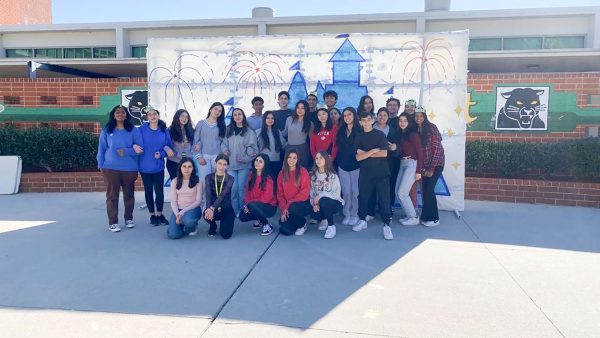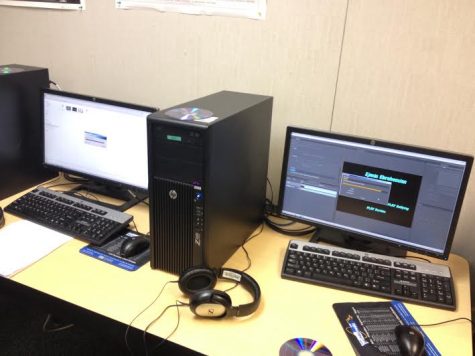Libraries adapt to e-readers
The American Library Association’s 2015 plan is to develop “digital content rather than traditional, physical content. “
A major part of many people’s childhoods is the library. Whether during trips there with a class of fifth graders to pick out a book from the Series of Unfortunate Events, or during the days before kindergarten when mothers drag their kids to the Glendale Central Library for readings of picture books, it’s safe to say that the library was definitely a familiar place for a lot of people during their childhoods.
Even now, despite their time being mostly taken up by school work or school related events, many high school students still make time for the library.
In fact, a large number of people seem to be embracing the public library, too. According to a survey done by the Institute of Museum and Library Services, physical visits to the library between 2001–2010 increased by 32.7%. One speculated reason for this surge in library visits can be attributed to the economic recession. During the recession, many people used the library as a low-cost resource for school — such as GED practice books or SAT practice books — and for entertainment, such as renting DVDs or audio books.
E-books are so much more convenient, because you can’t really carry around a book with you all the time, but you always have your phone with you, which is where I do my reading.
— Zehra Siddiqui
As technology advances, e-books also become more prominent. Rather than pulling a novel out of a backpack during silent reading time in English class, some students have started to move toward doing their reading on Kindles, Nooks or the app iBooks. “E-books are so much more convenient, because you can’t really carry around a book with you all the time, but you always have your phone with you, which is where I do my reading,” said Glendale High School sophomore Zehra Siddiqui.
E-books themselves have been more popular as years have gone by. Since the iBooks app has been available since 2010, it’s been downloaded over 130 million times, according to an article on idownloadblog.com. A Pew Internet Research Center survey released in 2012 stated that the number of Americans sixteen-years-old and older who read e-books jumped from 16% in 2011 to 23% in 2012.
So where do libraries stand in the technological advancement of reading? Rather than libraries being shut down because of e-books’ surge in popularity over the past few years, libraries are acting proactively and choosing to adapt to this feature. The same 2012 Pew Internet Research Center survey also said, “Awareness that libraries offer digital texts grew from 24 percent to 31 percent.”
The American Library Association’s 2015 plan has a piece specifically dedicated to the “transformation” of libraries. The “transformation” of libraries is basically defined as the development of digital content rather than traditional, physical content. The 2015 plan states that “ALA provides leadership in the transformation of libraries and library services in a dynamic and increasingly global digital information environment.”
Many branches of Glendale’s public libraries have followed through with the American Library Association’s plan. A machine set right next to the section of literary classics in the Central Library is the new Discovery Station. This touch screen machine allows library visitors to borrow books on different platforms, instead of using the library’s traditional method of physical book borrowing. Through the Discovery Station, library visitors browse the 3M Cloud Library, which is the library’s storage of digital e-books.
By using the Discovery Station, books can be read through tablets, personal computers or SmartPhones. The 3M Cloud Library stores content by using cloud technology, as suggested in its title, and it was launched on June 21, 2012, at the Central Library. The 3M Cloud Library was unveiled by Glendale’s mayor Frank Quintero, along with the Library Director Cindy Cleary, and 3M representatives.
According to Glendale Public Library website, users are able to ‘start reading on a laptop, continue on an iPad, and finish the book on an Android smartphone.’
— Lauren Alparaz
One of the most advantageous factors of the 3M Cloud Library is that its users don’t have to own an e-reader in order to benefit from it. In fact, according to Glendale Public Library website, users are able to “start reading on a laptop, continue on an iPad, and finish the book on an Android smartphone.” The 3M Cloud Library reaches out to a more general popular of people who have not specifically invested in e-readers, but perhaps in technology with multiple purposes, such as smartphones or laptops.
That factor brings the 3M Cloud Library to a multitude of people. While 34% of people own e-readers, according to USA Today, almost double that amount of people own more general technology. In May 2013, 56% of Americans own a smartphone, according to Pew Research Center’s Internet and American Life Project.
However, even as libraries begin to transform themselves in order to adapt to the new technology of the future, some people simply still don’t buy into it because of personal aesthetic decisions. Junior Maggie Baboomian said, “I barely ever go to the library because I get all of my information for school from the Internet. And for actual reading purposes, I have my own bookshelf full of books and it wouldn’t be as full as it is now if I had to return them to the library. And besides that, the smell of a new book from Barnes & Noble or something is so nice compared to a library book.”
Even as libraries adapt to new technologies, the general population can be hesitant in moving along with the changes. “I haven’t seen much change in the way that people function at the library, and I’ve been working here for about three years,” said Kevin Irianto, a librarian at the Central Library. “And anyway, the general readers who visit actually go for physical copies of books. I think that if they wanted copies for their e-readers, that they would go online and download them, just like the way people download music from the Internet for their iPhones.”
With Clark having an emphasis on science and technology, students learn in an environment that has technology embedded in it. According to Clark librarian Susan Newcomer, when Clark opened in 1998, the school had already embraced technology because there were computerized resources throughout the cybrary. “We had several different databases, and over the years we got databases online like SIRS Research or Proquest,” Newcomer said. “The library has AlphaSmarts, which are machines that students can check out when they have injured hands and can’t write. The books in the library are selected with the curriculum, so there are books that have to do with robotics, engineering, and digital arts.”
Newcomer said that at some point the school district may utilize e-books as well. “I foresee the cybrary going in that direction eventually,” Newcomer said.

INTERESTS/HOBBIES: ¯\_(ツ)_/¯
EXTRACURRICULAR ACTIVITIES: running around to make a yearbook.
THREE WORDS TO DESCRIBE ME ARE: can i LIVE
IN...















